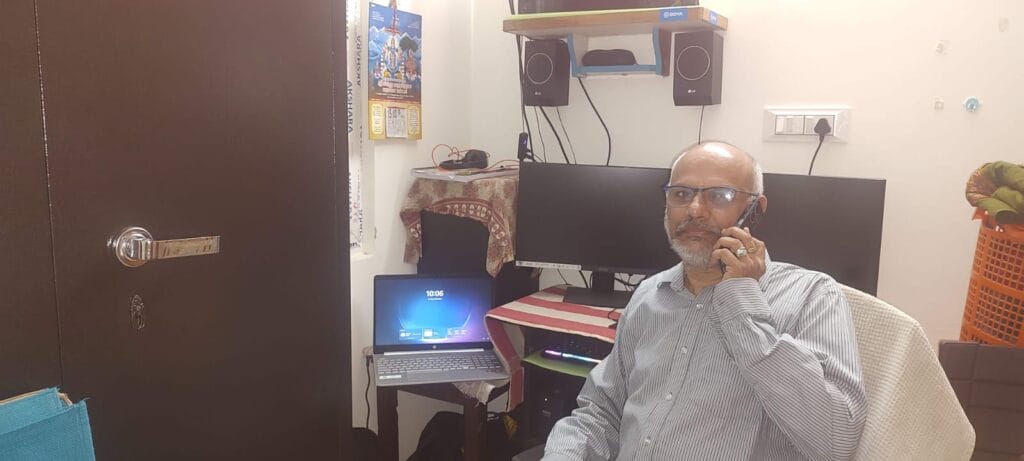In recent monsoons, as heavy rains battered Chennai, causing floods and damage, many residents grew frustrated with the government’s emergency call centres. Calls often went unanswered or were handled by outsourced agents unfamiliar with local issues. As the president of the United Federation of Residents in Tambaram, I felt it was essential to address the growing concerns about emergency support during the rainy season.
Anticipating a heavy downpour on October 17th and 18th this year, we launched our community helpline — just days before the rains started. The helpline, reachable at 044-35901040, is manned by a dedicated team of around 70 volunteers spread across five zones of the Tambaram City Municipal Corporation.
Read more: Are Mumbai’s roads prepared for monsoons?

The key to running the helpline was to have access to senior officials in government departments such as those in rescue, hospitals, and the electricity board, as well as proper documentation of the emergencies in question — both before and after the problems are resolved.
The state of government-run call centres
When I spoke to a government official about how the relief efforts were slow and sometimes unaddressed, he told me that half the complaints didn’t reach him.
Although running a helpline during rains isn’t new, the existing government-run call centres have struggled to reach many people and assist those who are stranded or experiencing medical emergencies during heavy rains.
Read more: Stormwater drains repair on, will North Chennai be finally flood-free?
This is because many of these helplines are run by outsourced call centres and the staff there may not fully grasp the urgency needed to respond to the emergencies. When a call comes in, the employees who receive the call, have to forward the complaint to the relevant department. Once the department receives the complaint, they will provide the necessary relief. However, since the complaint does not go directly to higher-ups in the department, action is not immediate.
Often it takes around 8-12 hours for complaints to be resolved given that they have to move through three or four rungs of bureaucracy to finally be heard and acted upon. We wanted to address this with our helpline.
Here is how our Tambaram volunteers work
When a resident calls, we collect essential information such as their name, address, and the nature of their complaint. We categorised these complaints into three priority levels — high, moderate and low — so we can address the most urgent issues first. For instance, in the initial days, we received 127 complaints, with 27 classified as high-priority, including fallen electrical wires and requests for ambulances for pregnant women.

Our volunteers are spread across five zones in Tambaram, each of us working one of two shifts: 6 am to 10 pm and 10 pm to 6 am. When we receive a call based on high, medium and low priority, the volunteers go to the affected area, take photos of the issue and send them back to me. I would then forward the documentation to the authorities concerned. Once the issue is fixed we would take another picture to document how the problem got resolved.
Understanding how issues have been categorised
Here is how we have classified the issues based on importance:
High priority: Under high priority, we put medical emergencies, pregnancies, people stranded due to inundations, fallen tree branches or those on the verge of falling, and electrical wires that have fallen into floodwaters.
Moderate priority: Under moderate priority, we categorised open potholes on flooded roads and roads that have caved in because of heavy rain. In such cases, our volunteers would go to the area and put signs near the holes, to indicate danger zones. We also alerted the Highways Department as this mostly occurred on the highways. In addition, we raise complaints with the Tambaram Corporation. However, we cannot ask the corporation to fix the problem immediately during the rains, hence we resort to using warning signs.
Low priority: Power outages are classified as low priority. The power cuts would last for 6–7 hours in many areas. When we get calls about this, our volunteers go to the Electricity Board office, raise a complaint and try to identify the source of the outage. We then inform the complainant about the problem and give them an estimate of how long the power cut would last.
Read more: As rain pounds Jawahar Nagar, residents miss an old pond and stormwater drains
Our future plans for Tambaram helpline
We plan to operate this helpline throughout the monsoon season, adjusting volunteer participation based on the intensity of the rains. After the first three days of heavy rain, we reduced the number of volunteers, but as the monsoon strengthens, more volunteers will join the efforts.
Our initiative has had a significant impact on other RWAs. Many members have contacted us to learn how we implemented this work and are keen on starting a similar helpline in their areas.